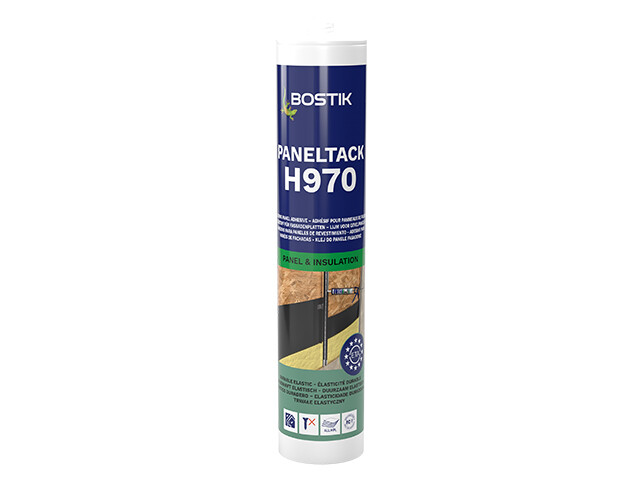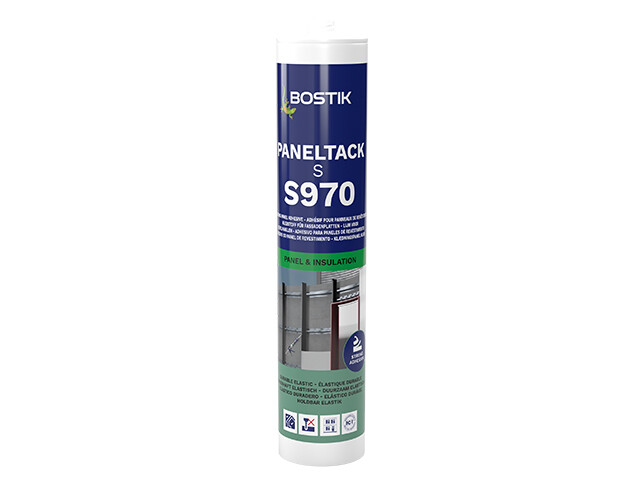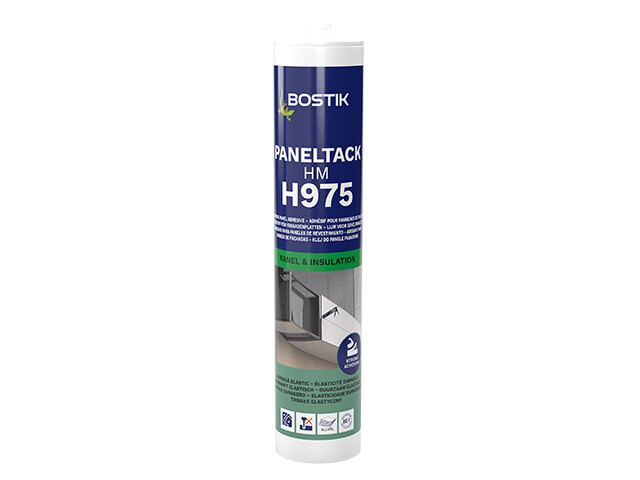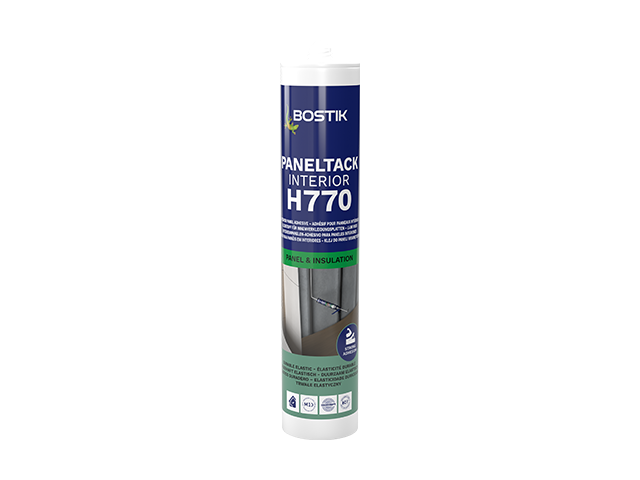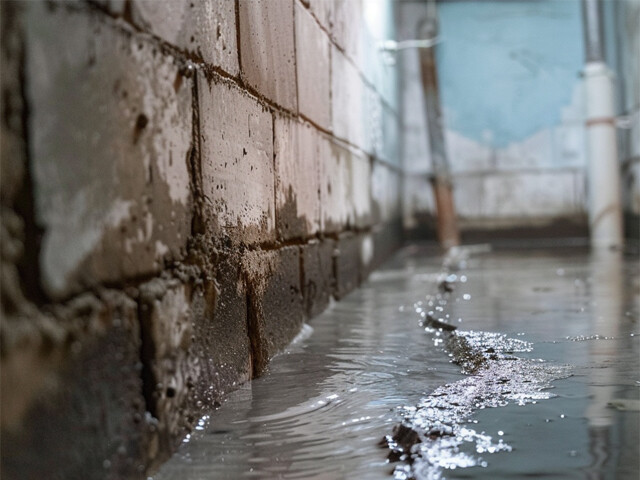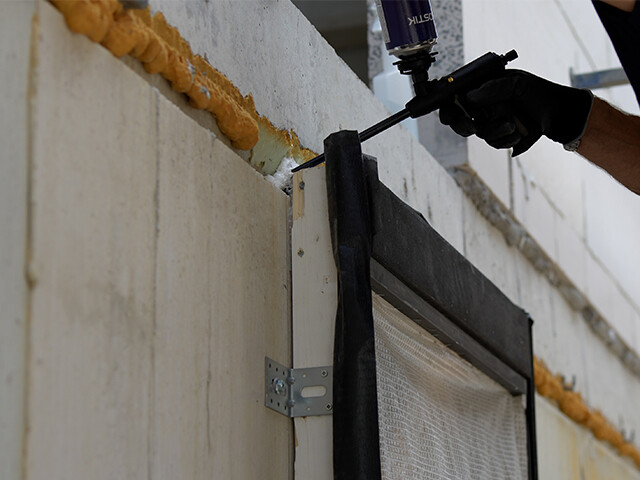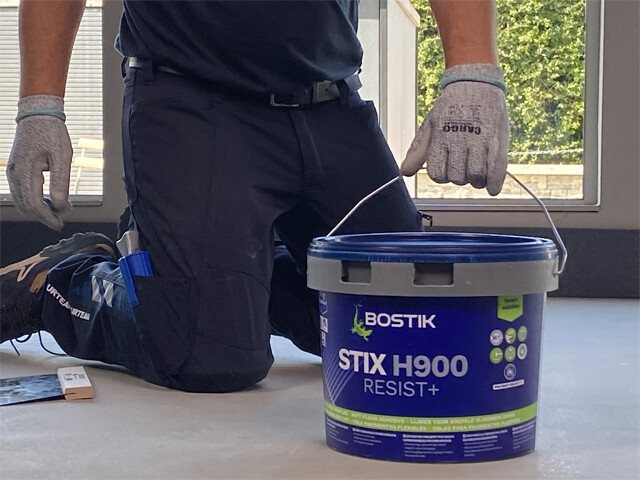The Paneltack cladding adhesive system provides a solution tailored to your exterior wall cladding panels and the system that supports them.
What is the best exterior wall cladding?
Bonding exterior panels is a popular method of cladding a building. The panels finish the building and are its first line of protection against the elements. Panels can be fabricated out of many different materials including recycled bio-fibres, vinyl, metal, and composites.
Bonding cladding panels with adhesives instead of using mechanical fixings has the following advantages:
- An invisible finish: no screws, bolts, or brackets are needed to fix the panels.
- Panels are bonded over a large area rather than concentrated like bolts at specific locations. Thus, thinner and lighter panels can be used. Also, there is no need for holes or slots.
- Adhesive bonding is flexible and can absorb vibrations such as from wind and traffic.
- Cold bridging (which can occur through fixings) is eliminated.
- Forces acting on and within the panels are distributed evenly through the adhesive, minimising deformations in the panels.
As with any system, there are also important considerations that need to be addressed for successful application.
- Bonding cladding panels is a job for expert applicators who are trained in the proper use of the adhesive system. Request your training now if you want to become one of those experts.
- Adjustment is not possible once the panel has been bonded in place. Incorrect placement will necessitate removal of the panel and re-bonding.
- Because the bonding at the back of the panels cannot be seen, it is difficult to see if the panel has been bonded properly.
- Bonding of panels cannot take place in all weather conditions and temperatures.
- For Bostik’s warranties to apply to your project, you must install the complete system following all the recommendations – no exceptions.
A professional applicator is experienced in assessing the factors that influence the quality of the bonding. They will work to a quality control system that sets out how and under what conditions the bonding can take place.
With a robust quality control system, a building’s owners can enjoy all the benefits of bonded exterior cladding panels.
Introducing the Paneltack complete cladding adhesive system
A complete adhesive system takes into account the type of cladding panels used, the cladding support construction, and the type of adhesive needed. Bostik’s Paneltack adhesive system consists of the following components:
- Primer (and/or cleaner): a primer (usually brush- or roller-applied) promotes adhesion between the panel and the support structure. A wooden support system requires a different primer than an aluminium support system. It is generally necessary for a cleaner to be used to prepare both surfaces before bonding. A ‘washprimer’ provides cleaning and priming with one application.
- Foam tape: double-sided adhesive foam tape provides temporary fixing until the adhesive has cured, and it also serves as a spacer for the adhesive bead.
- Adhesive: the final attachment of the cladding to the support structure. BOSTIK has developed specific adhesives that are tailored to the properties and characteristics of different types of panels.
Here are three key BOSTIK adhesives developed for exterior cladding – and one designed specifically for interior panels.
- BOSTIK H975 PANELTACK HM is a professional high-modulus moisture-curing elastic cladding panel adhesive. It was developed for bonding fibre-cement boards, natural stone, and aluminium composite panels for façade cladding, fascias, soffits, canopies, and parapets.
- BOSTIK H970 PANELTACK is a professional moisture-curing, high-modulus, highly elastic cladding panel adhesive. It was developed for bonding HPL (High-Pressure Laminate) panels for façade cladding, fascias, soffits, canopies, and parapets. It is suitable for the bonding of larger HPL panels to timber battens.
- BOSTIK S970 PANELTACK S is a moisture-curing, highly elastic adhesive based on silicone. It was developed for bonding panels of pressed mineral wool (ROCKPANEL) in applications such as façade cladding, fascias, soffits, and canopies.
- BOSTIK H770 PANELTACK INTERIOR is a moisture-curing, highly elastic adhesive with high final strength. It was developed for the bonding of cladding panels (e.g. HPL) in an indoor application.
Application of external cladding panels
Many different wall cladding panel systems are available on the market, each with its own individual characteristics. Bostik works closely with major wall cladding panel manufacturers to closely match the adhesive system to their cladding panels. Detailed Technical Information Sheets are available for many of the cladding panels. They provide information specific to the cladding panel to be used.
The following steps are for information only. They are not exhaustive and should not be used in place of the specific installation instructions tailored to the panel type and support structure.
Step 1: Check the weather
The weather forecast, temperature, relative humidity, and dew point all need to be checked and recorded to determine whether conditions will be conducive to installation.
Step 2: Apply primer
Clean and degrease surfaces, then apply the appropriate primer to the support battens and the rear of the panels. These treatments need only be applied to the areas of the panels where the adhesive is to be applied. The exact pretreatment of the panels depends on the type of panel.
Step 3: Clean the surfaces before bonding
It is necessary to clean and/or prime the back side of the panel before bonding. Cleaning is necessary to remove possible residual substances that often originate from the production process or from a foil applied to protect the surface.
Allow the cleaner to dry completely (at least 10 minutes).
Step 4: Install foam tape
Apply Bostik FoamTape vertically and continuously to the support battens or profiles per the detailed installation instructions. Do not remove the protective foil yet.
Step 5: Apply the adhesive
Use the provided nozzle with the V-shaped incision. This V-shaped cut prevents air entrapment when installing and pressing the panel.
Apply the adhesive continuously from top to bottom without interruption. The adhesive bead should be located approximately 10mm from the line of the foam tape.
After you have applied the adhesive, you have 10 minutes to apply the panel.
Step 6: Install the cladding panel
Remove the protective foil from the foam tape.
Tilt the cladding panel carefully into position. At this point, an adjustment of only a few millimetres is possible.
Press the panel by gently rubbing on the foam tape. This is the final position of the panel, and no further adjustment should be made.
Clad your building with confidence using the BOSTIK Paneltack adhesive system.
Discover PanelTackTM
For over 30 years, Bostik has been an active, successful and innovative player in the field of bonding exterior wall cladding panels in a ventilated construction and has had a leading role in terms of knowledge, experience and quality. Every time it is a great pleasure to see how the bonded panels give a building a beautiful appearance.Discover Now
Sign up for technical training
Bostik ACADEMY is a knowledge center carefully created for professionals in the construction market. At the ACADEMY you can sign up for a tailored training program, matched to your needs and skills.
Our experienced Technical Team will present our product portfolio, best application methods, and key industry recommendations. Sign up through the link below to learn more.

